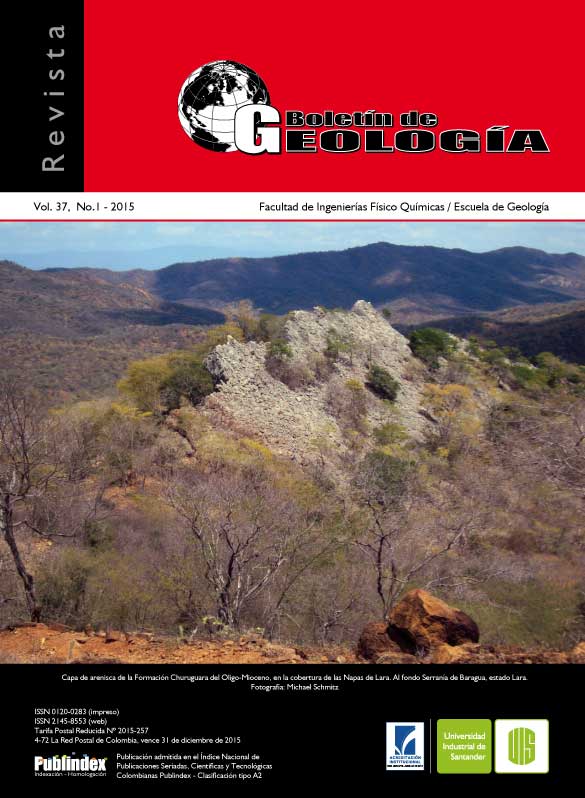PRELIMINARY SEISMIC MICROZONES DETERMINATION OF THE MERIDA METROPOLITAN AREA
Published 2014-12-18
Keywords
- seismic noise,
- gravity,
- microzones,
- Mérida
How to Cite
Abstract
To contribute to the seismic microzonation of the Mérida metropolitan area, a geophysical characterization of the soil, applying methods of ambient seismic noise, gravity and seismic refraction, is performed. From the ambient seismic noise technique, fundamental periods ranging from 0.2 to 2 seconds are obtained, which have good correlation with the sediments thicknesses, obtained from gravimetry, that shows values ranging between 12 and 130 m. The seismic refraction, through 62 seismic profiles, establishes velocity models for the shallow layers up to a maximum depth of 15 m for both P and S waves. All these results provide a basis for a preliminary microzonation map that classifies the metropolitan area into three parts: the zone 1-1 with shear wave velocities from 350 to 650 m/s and sediments thicknesses between 0 and 60 m, the zone 1-2 with shear wave velocities from 350 to 650 m/s and sediments thicknesses greater than 60 m, and the area 2-1 with shear wave velocities equal to or greater than 650 m/s and sediments thicknesses between 0 and 60 m.
